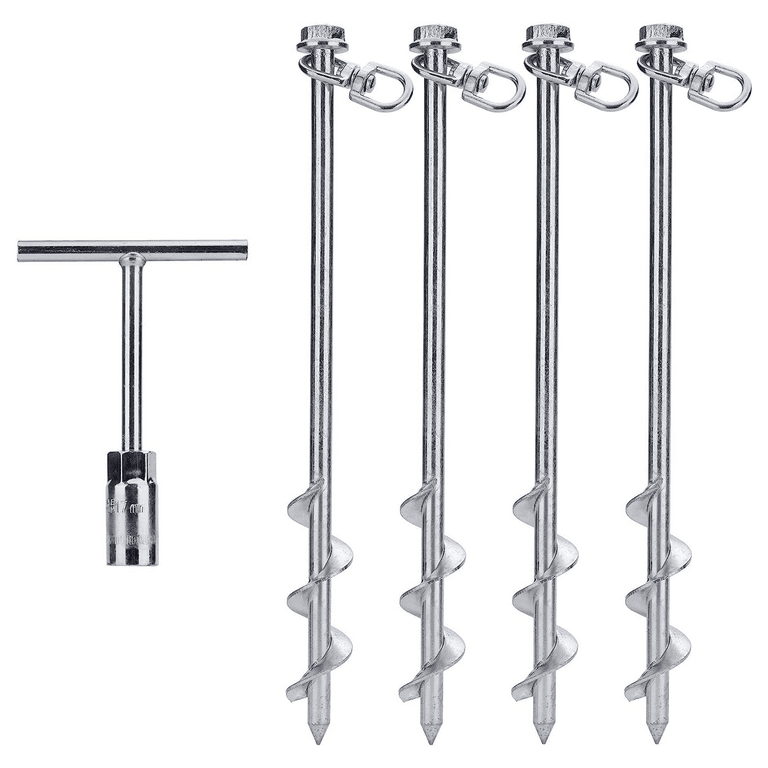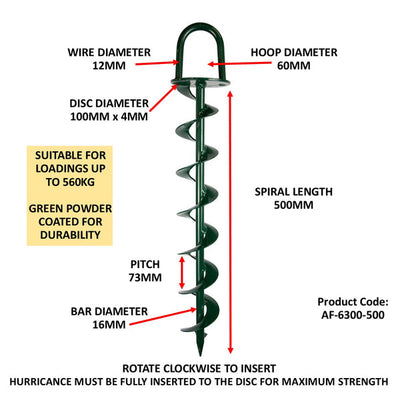Key Features to Check When Selecting a Reliable Ground Anchor
Key Features to Check When Selecting a Reliable Ground Anchor
Blog Article
Check Out the Various Types of Ground Support for Your Following Project
When getting started on a building and construction or landscape design job, understanding the numerous sorts of ground supports readily available is important to making sure both security and resilience (Ground Anchor). From auger supports, which master varied soil conditions, to stake anchors developed for temporary setups, the alternatives are many. Additionally, concrete and screw supports existing distinct advantages in details scenarios, while deadman supports are tailored for applications needing resistance to lateral pressures. The option of an ideal anchor kind can dramatically affect the overall success of your project, motivating more exploration right into their particular advantages and applications.

Auger Anchors
Auger supports are a preferred selection in numerous building and landscape design jobs as a result of their one-of-a-kind style and effective anchoring abilities. These supports include a helical screw-like shaft that is driven into the ground, enabling a stable and safe hold. The spiral style helps with simple installation and optimizes resistance versus side pressures, making auger anchors specifically effective in applications such as fence, short-term structures, and disintegration control.
The installment process of auger anchors is reasonably simple. Auger anchors can be easily eliminated and recycled, which includes to their cost-effectiveness and sustainability.
One of the substantial advantages of auger anchors is their ability to distribute loads uniformly across the bordering soil, lowering the risk of dirt disruption and lessening ecological impact. Additionally, they are much less susceptible to loosening or heaving in time compared to typical anchoring approaches. Auger supports are an excellent choice for jobs requiring trustworthy and durable anchoring remedies.

Risk Anchors
When it comes to securing frameworks in a range of outdoor applications, stake supports provide a reputable and uncomplicated remedy. These supports are usually constructed from resilient products such as steel or light weight aluminum, created to withstand environmental stress and anxieties while offering optimal security. Their basic design enables fast setup, making them an ideal selection for temporary or permanent anchoring requirements.
Risk anchors are particularly useful in securing tents, canopies, and various other light-weight structures against wind and weather condition. They work by being driven into the ground at an angle, producing a strong hold that stands up to pull-out forces - Ground Anchor. The performance of stake supports depends upon several factors, including soil kind, dampness material, and the angle of installment
For added safety, several stake supports come with accessory points for ropes or straps, permitting for stress adjustments as necessary. In applications such as landscape design or building, they can properly support tools or structures on uneven surface. On the whole, stake supports offer a affordable and versatile service for protecting various exterior setups, making them a preferred choice for service providers and do it yourself fanatics alike.
Concrete Anchors
Concrete anchors offer a durable solution for protecting structures to concrete surfaces, ensuring security and safety in numerous applications. These supports are necessary for tasks ranging from household buildings to massive commercial setups. They can be found in various kinds, consisting of development anchors, adhesive anchors, and undercut supports, each created for particular load needs and ecological conditions.
Growth anchors rely upon mechanical mechanisms to grasp the concrete when installed. They are perfect for medium to sturdy applications. Sticky anchors make use of high-strength epoxy or resin to bond the anchor to the concrete, supplying exceptional load-bearing capabilities, particularly in fractured concrete situations. Undercut supports develop a special shape within the concrete, giving outstanding holding power, particularly in applications where tensile loads are prevalent.
Choosing the ideal concrete support includes thinking about variables such as the weight of the lots, the condition of the concrete, and ecological problems. Appropriate setup strategies are crucial to ensure optimum performance and integrity. When implemented correctly, concrete supports dramatically improve the architectural stability of various jobs, making them important in modern building and construction practices. Understanding the details needs of your project will assist in selecting the right type of concrete anchor for the job.
Screw Anchors

Screw supports are a versatile attaching option that can be effectively employed in a range of applications where conventional concrete supports might not be sufficient. These supports contain a helical style that allows them to be easily driven right into the ground, making them perfect for usage in soil and other substratums. Their unique structure offers exceptional holding power and resistance to pull-out pressures, making them appropriate for many projects, from landscaping to structural he has a good point support.
One of the primary advantages of screw anchors is their convenience of setup. They call for marginal devices and can typically be mounted without the demand for excavation, which conserves both time and labor prices. In addition, screw anchors can be removed and recycled, providing a sustainable remedy for momentary applications.
Screw anchors are especially valuable in areas where dirt problems are testing, such as loose or sandy soils. Their ability to be set up at varying midsts enables customization based on specific project demands. On the whole, screw supports supply a reputable and reliable anchoring technique, making them an exceptional option for service providers and designers seeking efficient services for their tasks.
Deadman Anchors
Deadman supports work as a robust option for maintaining frameworks in tough problems, specifically where conventional anchoring approaches may fail. These anchors are composed of huge, hefty things buried underground, which create resistance against side forces. The design normally includes a horizontal part, such as a block of concrete or a steel plate, buried in the dirt, to which cable televisions or straps are affixed.
The performance of deadman anchors exists in their ability to distribute loads over a larger location, lowering the risk of failing in unstable soil problems. They are particularly helpful in applications such as keeping wall surfaces, temporary frameworks, and slope stabilization, where soil activity can jeopardize the integrity of the structure.
Setup of deadman anchors needs careful preparation to ensure they are placed at the correct depth and alignment, maximizing their load-bearing capability. While they might need even more labor and product than light-weight anchors, their reliability in damaging problems makes them very useful for long-term projects. Deadman anchors are versatile and can be adapted to numerous applications, making them a best selection for engineers facing special obstacles in their use this link jobs.
Verdict
In recap, choosing the proper type of ground anchor is vital for making sure security and protection in different projects. Auger anchors master varied dirt conditions, while stake anchors suit short-lived applications. For concrete surfaces, growth and sticky anchors informative post supply reputable alternatives, and screw supports offer convenience in tough surfaces. Deadman supports are specifically effective in standing up to lateral forces for keeping wall surfaces. Careful consideration of these options will certainly boost project results and structural integrity.
Additionally, concrete and screw supports existing unique advantages in specific situations, while deadman supports are tailored for applications requiring resistance to side forces - Ground Anchor.Auger supports are a preferred choice in numerous building and landscape design jobs due to their one-of-a-kind design and efficient securing capacities. They come in different types, including growth anchors, adhesive supports, and undercut anchors, each designed for details tons requirements and environmental problems
Sticky supports utilize high-strength epoxy or material to bond the anchor to the concrete, providing superior load-bearing capabilities, particularly in broken concrete circumstances. Generally, screw anchors give a trusted and reliable anchoring approach, making them an excellent choice for contractors and engineers seeking reliable options for their projects.
Report this page